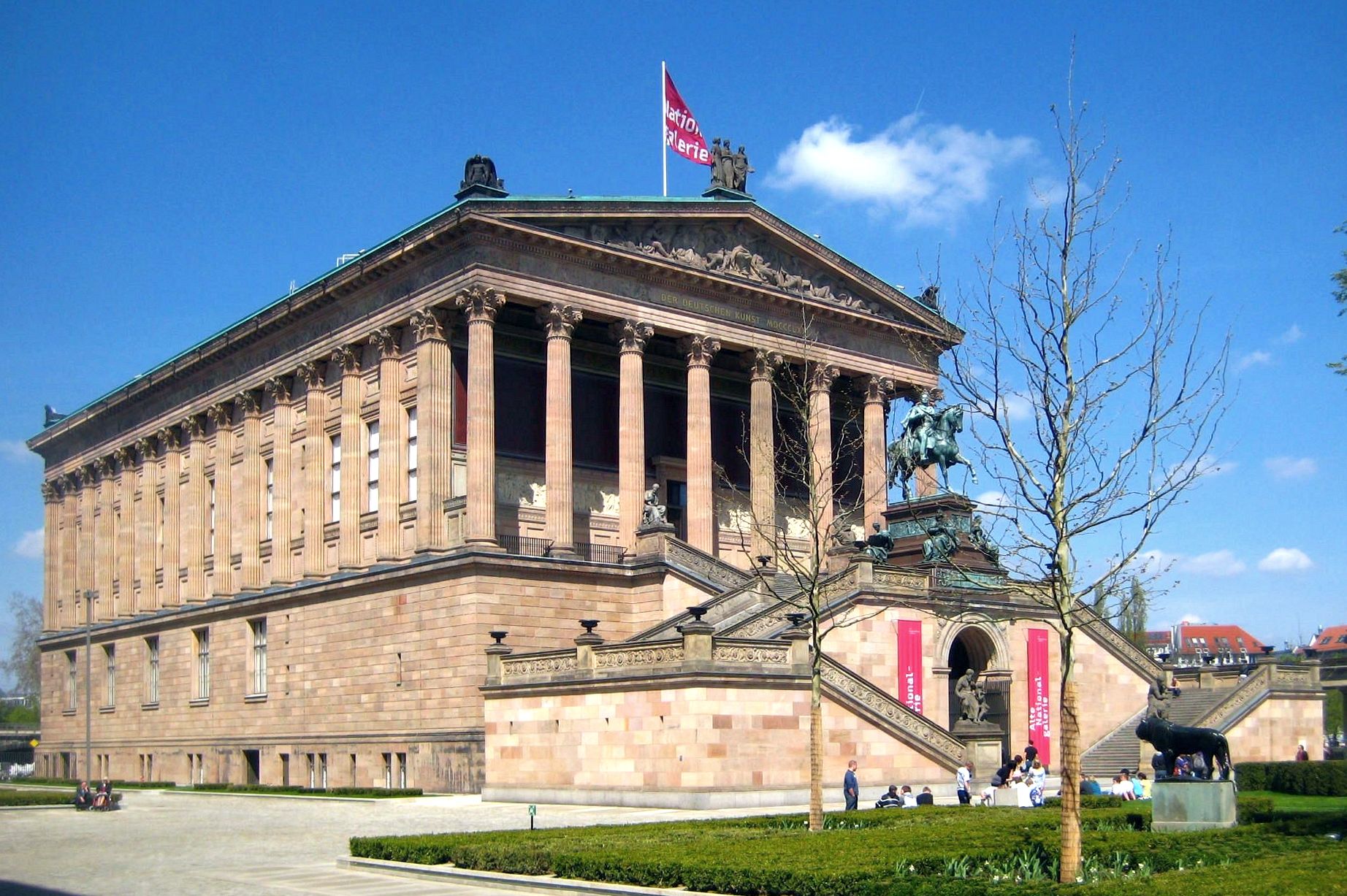Nationalgalerie (Berlin) on:
[Wikipedia]
[Google]
[Amazon]

 The National Gallery (german: Nationalgalerie) in Berlin, Germany, is a museum for art of the 19th, 20th and 21st centuries. It is part of the
The National Gallery (german: Nationalgalerie) in Berlin, Germany, is a museum for art of the 19th, 20th and 21st centuries. It is part of the

Berlin State Museums
The Berlin State Museums (german: Staatliche Museen zu Berlin) are a group of institutions in Berlin, Germany, comprising seventeen museums in five clusters, several research institutes, libraries, and supporting facilities. They are overseen ...
. From the Alte Nationalgalerie
The Alte Nationalgalerie ( ''Old National Gallery'') is a listed building on the Museum Island in the Mitte (locality), historic centre of Berlin, Germany. The gallery was built from 1862 to 1876 by the order of King Frederick William IV of Prussi ...
, which was built for it and opened in 1876, its exhibition space has expanded to include five other locations. The museums are part of the Berlin State Museums
The Berlin State Museums (german: Staatliche Museen zu Berlin) are a group of institutions in Berlin, Germany, comprising seventeen museums in five clusters, several research institutes, libraries, and supporting facilities. They are overseen ...
, owned by the Prussian Cultural Heritage Foundation.
Locations
The holdings of the National Gallery are currently shown in five locations: *Alte Nationalgalerie
The Alte Nationalgalerie ( ''Old National Gallery'') is a listed building on the Museum Island in the Mitte (locality), historic centre of Berlin, Germany. The gallery was built from 1862 to 1876 by the order of King Frederick William IV of Prussi ...
: 19th-century art, on Museum Island
The Museum Island (german: Museumsinsel) is a museum complex on the northern part of the Spree Island in the historic heart of Berlin. It is one of the most visited sights of Germany's capital and one of the most important museum sites in Europ ...
* Neue Nationalgalerie
The Neue Nationalgalerie (New National Gallery) at the Kulturforum is a museum for modern art in Berlin, with its main focus on the early 20th century. It is part of the National Gallery of the Berlin State Museums. The museum building and its ...
: 20th-century art, at the Kulturforum
The Kulturforum ( en, Cultural Forum) is a collection of cultural buildings in Berlin. It was built up in the 1950s and 1960s at the edge of West Berlin, after most of the once unified city's cultural assets had been lost behind the Berlin Wall ...
. The building, designed by Ludwig Mies van der Rohe, opened on 15 September 1968.
* Berggruen Museum
The Berggruen Museum (also known as the Berggruen Collection) is a collection of modern art classics in Berlin, which the collector and dealer Heinz Berggruen, in a "gesture of reconciliation", gave to his native city. The most notable artists ...
: in Charlottenburg, showing classics of 20th-century modern art collected by Heinz Berggruen; added to the National Gallery in 1996.
* Scharf-Gerstenberg Collection
The Scharf-Gerstenberg Collection (german: Sammlung Scharf-Gerstenberg) is an art museum in Berlin. Its collection of paintings, graphics and sculptures, spanning the period from French Romanticism to Surrealism, is currently housed in former ro ...
: in Charlottenburg, showing 20th-century art from French Romanticism
Romanticism (also known as the Romantic movement or Romantic era) was an artistic, literary, musical, and intellectual movement that originated in Europe towards the end of the 18th century, and in most areas was at its peak in the approximate ...
to Surrealism
Surrealism is a cultural movement that developed in Europe in the aftermath of World War I in which artists depicted unnerving, illogical scenes and developed techniques to allow the unconscious mind to express itself. Its aim was, according to l ...
; added to the National Gallery in 2008.
* Hamburger Bahnhof: ''Museum für Gegenwart'', contemporary art; added to the National Gallery in 1996.
* Friedrichswerder Church: 19th-century sculpture, a church designed by Karl Friedrich Schinkel, opened as an annexe of the National Gallery in September 1987. In 2012 the building was closed indefinitely owing to structural damage.
History
Planning, foundation and construction of the original building
There was long discussion of the desirability of establishing a national gallery in Berlin, particularly during the period of revolutionary nationalism around 1848, and it became an increasingly serious proposition from 1850, when publications appeared advocating it. From the start it was bound up with the ambitions ofPrussia
Prussia, , Old Prussian: ''Prūsa'' or ''Prūsija'' was a German state on the southeast coast of the Baltic Sea. It formed the German Empire under Prussian rule when it united the German states in 1871. It was ''de facto'' dissolved by an em ...
and the wish for Berlin to become a capital of world renown. The decision was finally taken in 1861, after the death of the banker and art patron Joachim Heinrich Wilhelm Wagener
Joachim Heinrich Wilhelm Wagener (16 July 1782 in Berlin – 18 January 1861 in Berlin) was a German banker and patron of the arts. His collection formed the initial nucleus of the Alte Nationalgalerie in Berlin.
Life and work